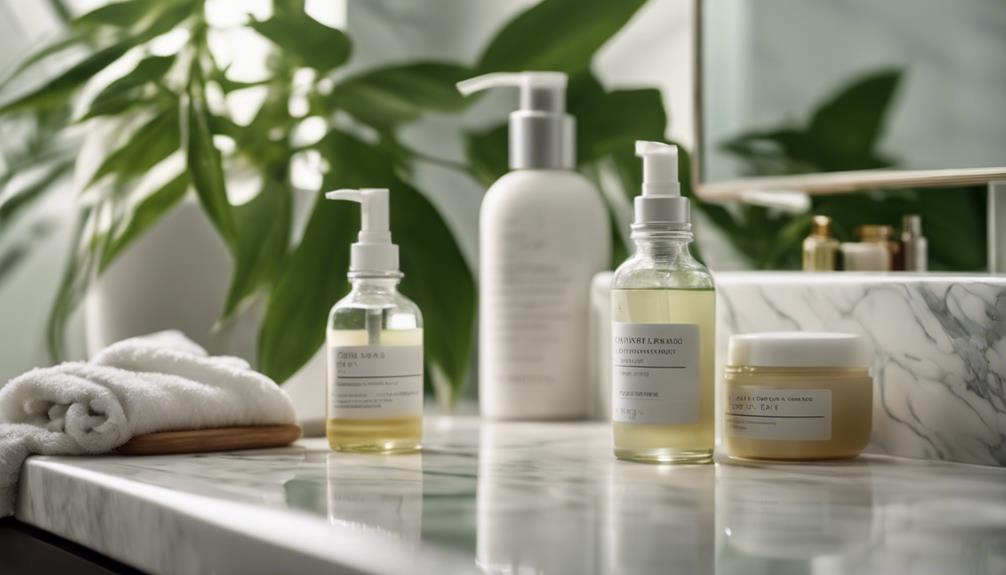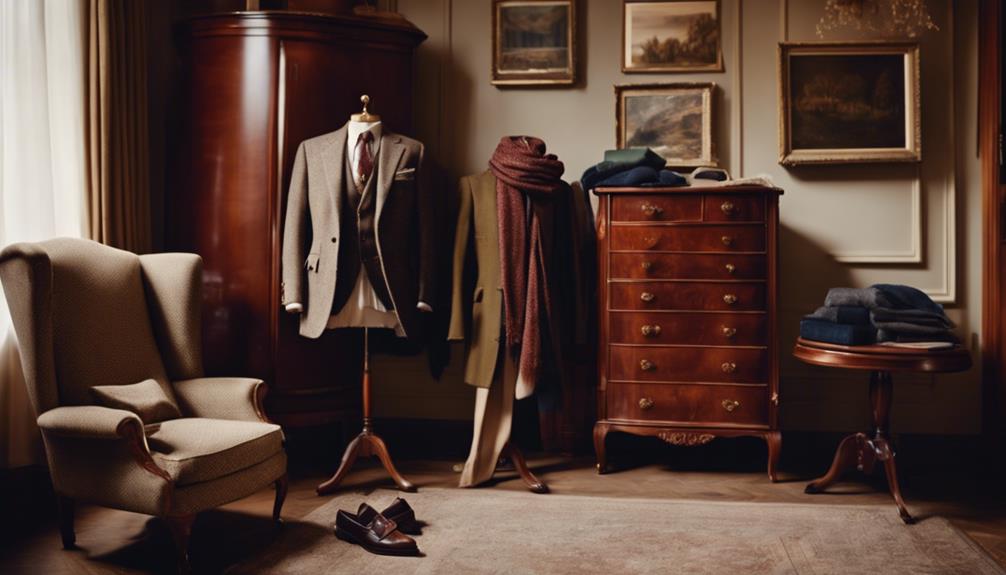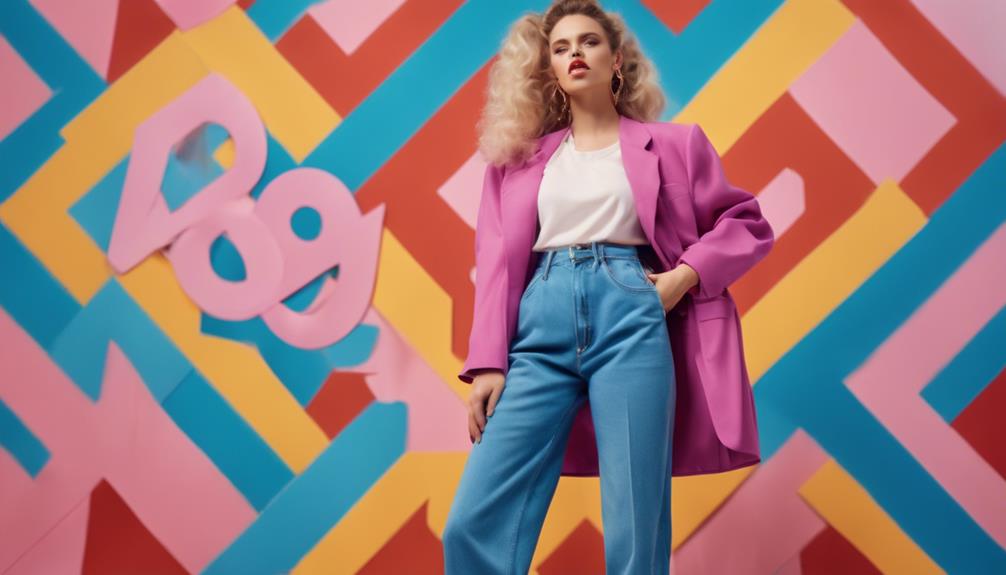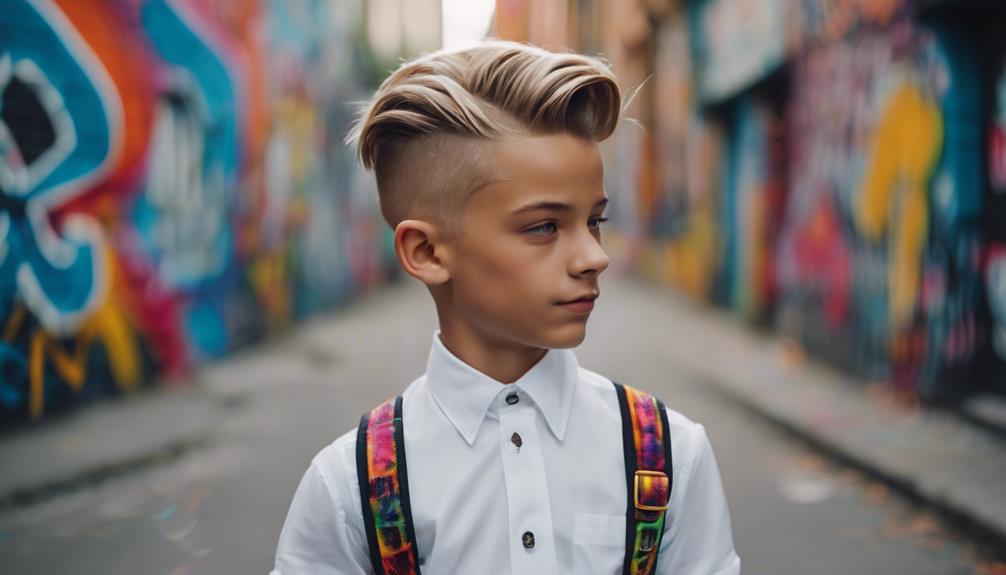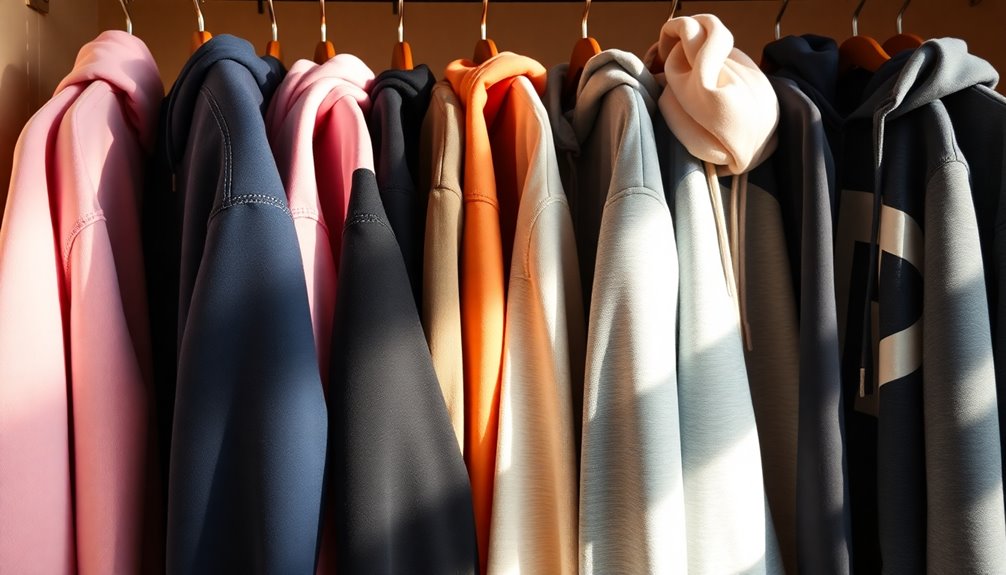40s fashion exudes timeless elegance and practicality, showcasing styles that reflect a pivotal moment in history. Flowing fabrics, structured silhouettes, and charming details like empire waistlines can be found in this era’s fashion. Soft pastels and comfortable designs highlight femininity while ensuring versatility. The fashion of the 40s made a statement about women’s empowerment through practicality, influencing personal expression. Today, you can incorporate 40s styles into your wardrobe through modern interpretations or upcycled vintage pieces. Whether you’re dressing up for an event or looking for chic everyday wear, 40s fashion has something to offer. Discover the enduring impact of this classic style as you explore further!
Key Takeaways
- 1940s fashion emphasized elegant silhouettes with flowing fabrics and romantic details, reflecting societal changes during wartime.
- Empire waist dresses became popular for their flattering silhouette and versatility, suitable for both casual and formal occasions.
- The era's minimalism focused on practicality, leading to timeless styles that inspire modern sustainable fashion practices.
- Fashion icons of the 40s influenced contemporary trends, emphasizing clothing as a means of self-expression and personal identity.
Origin and historical background of the fashion trend/style
In the 1940s, fashion experienced a significant shift towards minimalism, influenced by the need for practicality during wartime.
This era also saw the rise of romanticism, as designers embraced softer silhouettes and feminine details to uplift spirits.
You'll notice how these trends reflected both societal changes and the desire for comfort without sacrificing style.
Fashion's Shift to Minimalism
As fashion evolved, the shift to minimalism emerged in the late 20th century, responding to the bold excesses of previous decades with a focus on simplicity and functionality.
This movement gained prominence in the 1990s, where designers like Calvin Klein and Jil Sander championed clean lines and neutral colors, creating pieces that emphasized understated elegance. You'll notice that minimalism draws inspiration from modernist art and architecture, promoting a “less is more” philosophy that appeals to those seeking clarity in their wardrobes.
The trend re-emerged in the 2010s, coinciding with a growing awareness of sustainable fashion. You might find that many now prioritize timeless pieces over fleeting trends, valuing versatility and practicality.
This shift reflects a broader cultural desire for order and efficiency, reminiscent of movements like Bauhaus and De Stijl, which championed the elimination of unnecessary elements in design.
Rise of Romanticism
The Rise of Romanticism in fashion, blossoming in the late 18th and 19th centuries, celebrated emotion and nature, steering away from the starkness of industrialization. This movement emphasized romantic fashion, characterized by flowing silhouettes and intricate detailing that connected wearers to nature and sentimentality.
You'd find rich fabrics adorned with lace, ruffles, and floral motifs, reflecting a desire for beauty and individuality. Historical styles became popular as a reaction against industrialization, leading to a fascination with medieval and Renaissance aesthetics. High-waisted dresses and capes emerged, allowing for expression and creativity.
Iconic figures like Queen Victoria played a pivotal role during this period, as her fashion choices, including fuller skirts and corseted bodices, influenced women's clothing throughout the mid-19th century.
The rise of the middle class also transformed fashion, making it more accessible and diverse. No longer strictly hierarchical, styles began to reflect personal taste and social change.
As you explore this era, you'll see how Romanticism in fashion not only shaped clothing but also captured the spirit of a time yearning for emotional depth and beauty amidst rapid societal shifts.
Key Characteristics

When you think about the key characteristics of '40s fashion, elegant silhouettes and flowing fabrics immediately come to mind.
The use of pastel hues and soft materials adds a delicate touch, while the popular empire waist gowns highlight a graceful figure.
Together, these elements create a timeless look that defines the era's style.
Elegant Silhouettes and Flowing Fabrics
Elegant silhouettes from the early 19th century showcase high waistlines and flowing fabrics that create a timeless, refined appearance.
You'll notice the neoclassical influence throughout this era, with designs emphasizing clean geometry and slim vertical lines. The 1810s introduced tubular skirt shapes that gradually shifted to more angular bodices, enhancing the elegance of the wearer.
Fabrics like fine muslin and silk played a vital role, allowing for graceful draping and movement essential to achieving an elegant aesthetic. The tailored, angular bodices of the time featured back-fastening designs, which contributed to a sophisticated silhouette that sets this period apart.
Additionally, the introduction of bust support through stays and corsets highlighted natural curves, allowing for the celebrated Grecian bend silhouette.
This combination of high waistlines, flowing fabrics, and structured bodices creates a unique harmony that captures the essence of early 19th-century fashion. By embracing these elegant silhouettes, you can channel the refined beauty and grace of a bygone era, all while appreciating the artistry and craftsmanship that defined this timeless style.
Pastel Hues and Soft Fabrics
Embracing pastel hues and soft fabrics, early 19th-century fashion captures a sense of purity and comfort, making it a favorite among women of the Regency period. The delicate shades of pastel colors, like pale pink, lavender, and mint green, reflect the romantic ideals of the time, enhancing the overall aesthetic of this era. Women often wore dresses made from lightweight muslin and cotton, which provided both mobility and comfort, essential for their daily activities.
The soft fabrics draped beautifully, creating an ethereal quality that epitomized femininity. Dresses typically featured empire waistlines that flowed gracefully from just below the bust, highlighting the natural silhouette and allowing for ease of movement. This design choice not only accentuated the waist but also complemented the gentle colors of the fabrics.
Accessorizing with shawls and sashes in matching pastel shades further enhanced the feminine aesthetic, creating a harmonious look. Overall, the combination of pastel hues and soft fabrics in early 19th-century fashion reflects a timeless elegance, making it a lasting influence on style and design throughout the ages.
Empire Waist Gowns
The charm of pastel hues and soft fabrics naturally leads us to the defining features of empire waist gowns, which highlight a high waistline sitting just under the bust for a flowing silhouette. This design creates an elegant look that emphasizes the bust while elongating the body, making it a favorite among women seeking both style and comfort.
Empire waist gowns typically use lightweight fabrics like muslin or cotton, perfect for the ease of movement that was especially valued during the early 19th century. You'll often find these gowns adorned with short sleeves or presented in sleeveless styles, featuring low necklines that can be embellished with delicate ruffles or lace.
This iconic fashion gained immense popularity during the Regency era, largely thanks to influential figures like Empress Joséphine Bonaparte, who showcased the neoclassical influence on design.
To complete your outfit, consider accessorizing with a shawl or sash, enhancing the overall aesthetic while reflecting the timeless elegance of empire waist gowns. With these characteristics, you'll appreciate how this style continues to enchant and inspire fashion lovers today.
Modern Interpretation

When you look at modern interpretations of 40s fashion, you'll notice a blend of sustainable practices and stylish designs.
Many sustainable fashion labels are reimagining the era's iconic styles while honoring environmental consciousness.
Plus, fashion icons from that time continue to inspire today's trends, proving that classic elegance never truly goes out of style.
Sustainable Fashion Practices
Sustainable fashion practices prioritize eco-friendly materials and ethical labor, pushing you to rethink your wardrobe choices for a greener future. By choosing organic cotton, Tencel, or recycled fabrics, you can greatly reduce the carbon footprint associated with clothing production.
Embracing circular fashion encourages you to buy less and invest in high-quality, timeless pieces that can be repaired or repurposed, promoting longevity in your wardrobe.
Upcycling is another exciting trend, where you can transform discarded clothing into stylish, new items. This not only extends the lifespan of existing materials but also adds a unique touch to your style.
As you explore your options, consider the rise of ethical fashion, which guarantees fair labor practices and safe working conditions. This growing demand for transparency in supply chains means your choices matter more than ever.
Fashion rental services and second-hand marketplaces provide fantastic alternatives to traditional shopping. By renting or purchasing pre-loved pieces, you can enjoy a variety of styles without contributing to overproduction.
Embracing these sustainable fashion practices not only benefits the environment but also enhances your personal style in a thoughtful, conscious way.
Sustainable Fashion Labels
Many fashion labels today prioritize eco-friendly materials and ethical manufacturing, making it easier for you to choose stylish options that align with your values.
Sustainable fashion labels like Reformation and Patagonia focus on using organic cotton, recycled fabrics, and low-impact dyes. They aim to reduce their environmental impact while offering trendy pieces.
These brands place a strong emphasis on transparency in their supply chains, allowing you to know where and how your clothing is made. By promoting recycling and upcycling initiatives, they encourage you to minimize waste and extend the lifespan of your garments.
Additionally, many sustainable labels partner with fair trade organizations, ensuring fair wages and safe working conditions for their workers.
Through innovative technology like 3D printing and digital design, these labels are also working to reduce their carbon footprint associated with traditional manufacturing methods.
By choosing sustainable fashion labels, you're not just enhancing your wardrobe; you're making a conscious decision to support brands that care about the planet and its people.
Embrace this modern interpretation of fashion, and feel good about the impact your choices have on the world.
Fashion Icons of the Era
Fashion icons today are reshaping our understanding of style by blending bold aesthetics with personal expression, making it easier for you to find inspiration that resonates with your unique identity. These modern influencers draw from the rich history of women's fashion, taking cues from the elegance and simplicity championed by figures like Empress Joséphine Bonaparte and Coco Chanel.
As we embrace cultural transformation, icons like Rihanna and Zendaya redefine high fashion with their fearless choices, combining timeless elements with contemporary flair. Their playful styles echo the daring spirit of the 1960s, reminiscent of Twiggy's iconic miniskirts and bold prints.
Moreover, designers like Alessandro Michele and Demna Gvasalia push the boundaries of modern aesthetics, incorporating vibrant colors and textures that celebrate individuality. You'll find that these fashion icons inspire not just trends but also a deeper understanding of how clothing can express who you are.
Styling Tips

When you're styling your 40s-inspired looks, consider the flattering silhouette of empire waist dresses.
Pair them with vintage accessories to enhance your outfit and add a touch of authenticity.
Layering these elements will elevate your ensemble while embracing the charm of that iconic era.
Empire Waist Dresses
Empire waist dresses are a stylish choice that flatters your figure while offering comfort and a touch of elegance. With their high waistline just under the bust, these dresses create a flowing silhouette that enhances your natural curves. Traditionally made from lightweight fabrics, they provide an ethereal quality perfect for warm weather.
To make the most of your empire waist dress, consider layering it with a fitted cardigan or bolero to accentuate your waist. This not only adds structure but also complements the dress's vintage charm. A statement necklace can draw attention to your neckline, adding an eye-catching element to your outfit.
For a contemporary edge, pair your empire waist dress with chunky sandals or ankle boots, making it suitable for casual outings or summer events. If you're looking to elevate your look for formal occasions, choose dresses with intricate details like lace, ruffles, or floral prints.
These embellishments enhance the vintage charm while still allowing for versatility. No matter the occasion, empire waist dresses effortlessly adapt from formal to informal settings, ensuring you look stylish and feel comfortable.
Empire Waist Dress Pairings
Styling an empire waist dress opens up a world of possibilities to enhance your look while embracing its elegant silhouette. To create a balanced appearance, consider pairing your dress with a fitted cardigan or bolero. This layering technique accentuates your waist while providing warmth and style. For a more polished, formal vibe, add a statement belt at your natural waist. This draws attention to your figure, enhancing the overall shape of the dress.
When it comes to accessories, opt for delicate jewelry like pearl earrings or a simple pendant necklace. These pieces add an elegant touch without overwhelming your outfit. To add a modern edge while maintaining the vintage appeal of your empire waist dress, try pairing it with ankle or knee-high boots. This chic contrast elevates your look effortlessly.
Lastly, don't hesitate to introduce texture and color by layering with a long, flowing scarf or shawl. This not only enhances your outfit's versatility for various occasions but also keeps the focus on the dress's distinctive silhouette. By mixing and matching these elements, you'll create a stunning ensemble that reflects your personal style.
Layering With Vintage Accessories
Adding vintage accessories to your outfit can elevate your style, bringing a unique flair that enhances your overall look. To start, consider incorporating brooches or statement necklaces that reflect the elegance of past eras. These pieces can add depth and character to even the simplest outfit.
Don't forget about vintage hats! A chic fedora or a classic cloche can evoke the sophistication of the 1920s or 1950s, making your ensemble stand out. Vintage handbags are another essential; they serve as functional accessories while showcasing the craftsmanship of bygone fashion eras.
Layering is key, so think about using vintage fabrics like lace or velvet to introduce rich textures into your outfit. A lace scarf can soften a structured look, while a velvet belt can cinch the waist of an oversized garment, reminiscent of 1980s power dressing.
Shopping Guide

When you're on the hunt for timeless pieces from the 40s, exploring vintage shops and online marketplaces like Etsy or eBay can lead you to unique finds that reflect classic style. Pay close attention to fabric quality and craftsmanship, as these elements are vital in classic fashion. Look for pieces made from durable materials like silk, wool, or cotton that showcase the attention to detail typical of that era.
Familiarize yourself with key fashion silhouettes from the 40s, such as the hourglass shape, so you can make informed purchasing decisions that align with your aesthetic. Don't hesitate to check out fashion reproductions from modern brands that offer collections inspired by these vintage styles, giving you the chance to enjoy classic looks with contemporary comfort.
Accessories are essential for elevating your outfit and achieving that authentic 40s vibe. Keep an eye out for vintage hats, gloves, and jewelry that complement your clothing. By focusing on these aspects during your shopping journey, you'll build a wardrobe that captures the essence of classic fashion while celebrating the craftsmanship of a bygone era.
Upcycling Vintage Clothing Techniques

When you upcycle vintage fabrics, you open the door to endless creative possibilities.
You can use remnants to craft unique accessories or even transform larger pieces into trendy garments.
Let's explore some innovative techniques that can breathe new life into those cherished vintage finds.
Vintage Fabric Remnants Projects
You can breathe new life into vintage fabric remnants by transforming them into unique garments and accessories that reflect your personal style. Upcycling vintage clothing not only reduces waste but also celebrates sustainable fashion practices. With techniques like patchwork, embroidery, and appliqué, you can turn small fabric scraps into eye-catching designs that showcase your individuality.
Vintage fabrics often feature distinctive prints and textures, adding character to your creations. By using these remnants, you're creating custom pieces that honor fashion history while promoting a circular economy—extending the life cycle of textiles that might otherwise end up in landfills.
Learning to sew with vintage fabrics opens up a world of possibilities. You can find numerous online resources, including tutorials and patterns specifically designed for upcycling. Whether you're making a stylish bag or a one-of-a-kind dress, you'll enjoy the satisfaction of crafting something unique.
This process not only highlights your creativity but also contributes to a more sustainable wardrobe. So immerse yourself in your collection of vintage fabric remnants and start crafting your next masterpiece today!
Upcycling Techniques for Vintage Fabrics
Transforming vintage fabrics into new creations requires a variety of upcycling techniques that enhance their original charm while giving them a modern twist. Upcycling isn't just about remaking old garments; it's a sustainable fashion practice that allows you to preserve the unique character of vintage fabrics.
You can start with techniques like patchwork, where you stitch together different fabric pieces, creating visually striking patterns. Embroidery adds a personal touch, turning simple items into artistic expressions. Experimenting with dyeing can also breathe new life into faded fabrics, giving them a fresh look.
Incorporating elements like fringing and layering can lead to innovative designs that reflect your personal style. Don't forget to reuse vintage buttons, zippers, and trims; they add distinctive finishing touches and make your creations one-of-a-kind.
Ultimately, the process of upcycling not only reduces waste and the carbon footprint associated with fast fashion but also promotes craftsmanship and appreciation for clothing history. So immerse yourself in your collection of vintage fabrics and let your creativity shine!
Cultural Impact

When you think about the cultural impact of 40s fashion, it's fascinating to see how it mirrors the themes found in Jane Austen's novels and the women's suffrage movement.
The styles of this era not only reflected social changes but also influenced women's roles in society.
As you explore these connections, you'll uncover how fashion became a powerful tool for self-expression and political statement.
Fashion in Jane Austen's Novels
Jane Austen's novels intricately weave fashion into their narratives, revealing how clothing choices reflect social status and personal identity in Regency-era society. You'll notice how high waistlines and light fabrics like muslin dominate the wardrobes of her characters, symbolizing the neoclassical influence of the time. Wealthier individuals often sport elaborate dresses adorned with accessories such as shawls and bonnets, showcasing their elevated social status. In contrast, simpler garments worn by less affluent characters starkly highlight class distinctions.
Austen's keen attention to fashion details provides insight into her characters' identities and personalities, allowing you to understand their motivations and societal roles better. The way characters engage with gender norms through their clothing choices reveals deeper critiques of the expectations placed on them regarding marriage and social mobility.
Austen's portrayal of Regency-era fashion not only captures the aesthetic values of her time but also contributes to the modern revival of interest in historical clothing styles, influencing contemporary adaptations in film and literature. By exploring these elements, you grasp how fashion in Austen's works transcends mere aesthetics to become a powerful commentary on society.
Women's Suffrage Movement Influence
The Women's Suffrage Movement greatly reshaped women's fashion, emphasizing practicality and comfort to empower women in their fight for equal rights. As suffragists campaigned for voting rights, they rejected restrictive garments like corsets that limited mobility and self-expression. Instead, they embraced practical clothing, opting for looser silhouettes that allowed them to engage actively in public life and activism.
White dresses became a powerful symbol during this time, representing purity and virtue, while also signifying the ideals of the suffrage movement. These dresses later established themselves as staples in women's fashion, reflecting a shift toward more liberated styles. The tailored suit emerged as another essential garment, signifying a new era of empowerment and independence for women.
Prominent figures like Emmeline Pankhurst and Alice Paul used fashion strategically, donning striking outfits to capture attention during marches and rallies. Their visibility in the public sphere not only advanced their cause but also helped reshape societal perceptions of women's roles.
The suffrage movement's influence on fashion marked a significant turning point, paving the way for future styles that prioritized both function and empowerment.
Frequently Asked Questions
What Are the Fashion Eras in Order?
You'd explore fashion eras in this order: Ancient, Medieval, Renaissance, Baroque and Rococo, and finally the Victorian Era. Each period showcases unique styles, reflecting cultural influences and social hierarchies of their time.
What Was the Fashion in the Classical Period?
In the Classical Period, you'd find flowing garments like chitons and togas, often cinched at the waist. Greeks favored simple fabrics, while Romans embraced vibrant colors, highlighting elegance, comfort, and the beauty of the human form.
What Is Classic Fashion Style?
Classic fashion style embodies timeless elegance with simple silhouettes and high-quality fabrics. You'll find staples like tailored blazers and little black dresses, seamlessly blending into various wardrobes for versatile, sophisticated looks suitable for any occasion.
What Is the 1800S Style Called?
The fashion style of the 1800s is often called Neoclassical, evolving through various phases like the Vertical Epoch and the Victorian Era. You'd see shifts from simple gowns to elaborate designs reflecting societal changes.
What Are the Similarities and Differences Between 1600s and 1940s Fashion?
The timeless 1600s fashion styles were characterized by elaborate ruffs, corsets, and full skirts, while the 1940s saw a return to practicality due to WWII. Both eras emphasized structured silhouettes, but the 1940s incorporated more tailored suits and utility wear. However, both periods showcased the elegance and attention to detail in fashion.
Conclusion
Incorporating 40s fashion into your wardrobe can be a fun and stylish way to pay homage to a bygone era. With its classic silhouettes and unique details, you can easily blend vintage charm with modern flair.
Don't hesitate to experiment with different pieces and styling techniques to make the look your own. Remember, fashion is all about expressing yourself, so embrace these timeless styles and let your personality shine through!

